Today on the 21st Century Classroom, from Super Sisters Academy:
It feels really weird, because in some ways it’s kind of cool to see how you can be homeschooled. But then in other ways you’re like, “Ohhhhh, it’s kind of scary.” Because we are staying home because of the virus that’s going around and for our safety and other people’s safety and everything. So it’s mixed feelings I guess.
–Ayla
I’m Life LeGeros, and that’s my daughter, Ayla, who is eight (Actually she turned eight during the pandemic). My other daughter, Zoe, is 10. Today on the 21st Century Classroom we’re going to explore quarantine homeschooling in the age of COVID-19.
- What are we learning during it?
- And what are we learning *from* it?
And we’re going to do this by talking with my daughters.
Ayla: As I said it was like scary but kind of cool to see how you can actually be homeschooled. I mean, I like school? And homeschool? So I like both of them. I kind of like both of them the same, but one reason why I don’t really like homeschool, it breaks me down a notch is because I don’t get to see my friends and interact with them, my teachers and everything, so.

Let’s start by setting the stage with a little context.
My wife and I have been homeschooling for about five weeks now.
We found out on a Sunday night over dinner that our schools were going to be shut down starting the following day. The next morning we spent the first few hours trying to plan a schedule; essentially my girls did this. We found an example online and they tweaked it and messed with it and put in a shape that they thought would work (.pdf)
And thus, Super Sister Academy, as my daughters deemed it, was born!
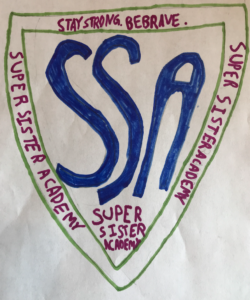
Here’s Zoe to walk you through a typical day.
Zoe: Morning meeting, with our family, where we do a greeting, a share, and an activity. And then we do morning meeting with our class on Zoom or… something like that. Then we have Academic Time for like two hours I think? Then we have Movement Time, where we just like move and stuff, and go outside and stuff. And then we have Creative Time where we can build, play with Legos, draw, paint, that stuff. And then we have … what do we have after that?
Ayla: Lunch.
The Academic Time that Zoe mentioned: that’s the time when they do work that’s provided from school. Packets from the girls’ school materialized pretty darn quickly after the lockdown. And now there’s a full-blown curriculum with up to 3 hours of work per day, which is great (although we did have to adjust our schedule a bit).
One thing it’s very important to acknowledge:
My wife and I have the privilege of being able to work from home, and support our homeschooling pretty directly. That’s *not* a privilege that our system affords to all families and caregivers. It’s very important to acknowledge that.
We’re doing our best, and we get a lot of feedback from our class of two.
Life: How did your week go?
Zoe: Pretty good, I guess.
Life: You had a huge, like, whole schedule from a teacher. All the stuff that you had to get done. You were able to take care of it?
Zoe: Yup.
Life: Do you feel proud of yourself? How did you what was your strategy for getting it all done?
Zoe: Ummmmmm, I just did it one by one.
Life: Super Sisters Academy is rockin’?
Zoe: Mm-hm.
Life: What kind of things do you miss about “school-school”?
Zoe: Like seeing everyone and being able to work with other people. Like my age and stuff.
Ah.
That brings me to a clear drawback about homeschool, and a worry for a lot of families.
Ayla: I just miss my friends and my teachers and I mean sure I can see them on like my morning meetings with them on the computer but like, I like interacting with them physically and stuff. But we can’t really, now.
Governor Scott’s Stay At Home order and the release of schools means it’s incredibly difficult for students to see their friends and teachers. And a lot of us are worried that connecting online alone… isn’t the same thing. At all.
At the same time, the change of venue actually works for some students.
Zoe: I like being able to just like work with someone without like, a bunch of other people needing help. The schedule at home is a lot more flexible? Because you’re at home and it’s not going to affect a bunch of other people if you switch things up. I like that.
Ayla: Usually when I’m at school there’s like, a lot of people talking because people need help and everything, and it’s kind of just easier for me to understand, when I have my parents as teachers for some reason? Since I just have one sister, it’s not like I’m have a million classmates, I just have one sister and they go off on us so they can help us for longer.

Costs, and opportunities.
I’m telling you, we are learning new things every day here at Super Sisters Academy. Costs and opportunities.
Life: Is it hard to stay on task at home?
Zoe: Yes, sometimes.
Life: What do you find? Like the most distracting?
Zoe: When Ayla’s singing!
Life: What else?
Zoe: Just like, sounds and stuff.
Now, a lot of the work Ayla and Zoe do is on either a computer or a tablet. So it’s obvious that they’re going to be gaining some tech skills. But what surprised me is the *range* of tech skills that they are gaining.
Ayla: How to work a slideshow. Because usually we don’t get to work on that kind of stuff.
Zoe: And how to make a good game on Roblox, which we don’t get to do in school. And I use my email a lot more because nobody can talk to me to my face.
Roblox is a game Zoe started playing when the quarantine began. She plays online with other kids, something we never used to let her do, but she’s totally into it now. Plus she’s also using it to learn some rudimentary coding and game-building.
And I confess I have mixed feelings about that.
Same with the email situation. It’s cool that they can stay connected to their friends, but on the other hand… email is complicated, right? It can be distracting or cause drama — and we weren’t even planning on giving Ayla email access yet. She’s in the 2nd grade. But now she’s got it.
On the other hand, the two of them are learning to navigate email with us by their sides. Would they have gotten that in a traditional school setting?
Flowers of the Math Garden
Anyway, some of these tools are actually really useful for learning things that can supplement the regular classroom.
Life: This is a game that your teacher asked you to play?
Ayla: Yes, it’s a math game.
Life: You just started it today?
Ayla: Yeah it’s a math game. I really like it. So I’ve kind of decorated it. I have a garden at my house like, it’s just part of the game. I put three trees on each side — well one side has two, because I didn’t have any more trees to put. There’s like flowers in the middle of the gaps… And I like the side with three trees better. I put a picnic table in front of the trees that have three, not just two [branches]. And then it has violet flowers on the top of it — violet flowers, no vase.
Life: That’s cool. What does this have to do with math?
Ayla: Well, it’s kind of like the other math games on Sun Dog. You do some stuff and than you get to do some fun. So I do the math problems and then I get to enter the garden.
Life: Oh.
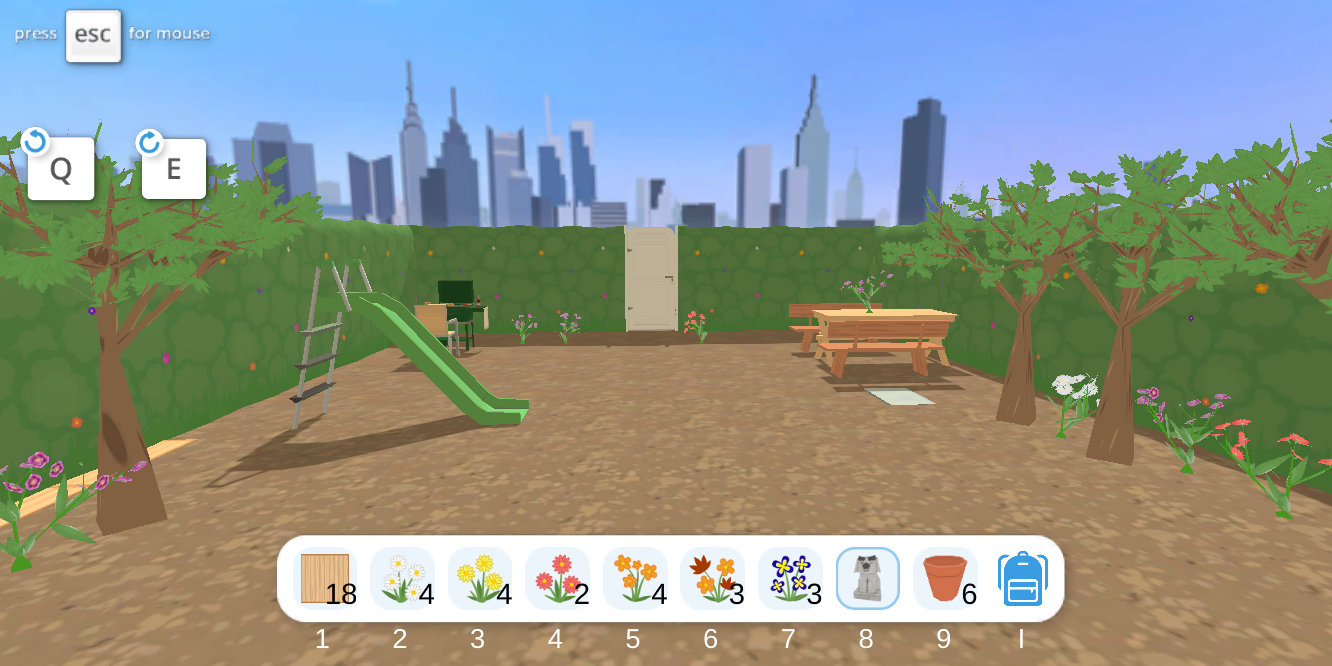
One thing I’ve learned after a few weeks of my kids playing these online games is that they are almost all incentivized in the same way: they have a garden or house or something that they get to decorate. And when they do well they earn points and prizes and then they get to put things in their place.
I never knew this before but apparently kids really love to decorate and it’s super motivating for them. So it motivates them to do whatever procedural skill and content learning they’re supposed to be doing.
Ayla: You do all kinds of math. You do like: coin math, subtraction, and shapes, and all that kind of math. So there’s not like one kind of math you pick.
Welcome to Bunny Land
So, maybe students and teachers alike will come out of this whole thing with more technology skills. And maybe that will help with the flexibility and individualization that seem to be some of the things students are getting out of home schooling that are harder to do in school.
Life: Do you think schools should just be the same?
Zoe: Well, I mean… I think some things should be different.
Life: Like what?
Zoe: Like, more outside time and stuff, because we’re inside, like all the time. So.
Life: Are there other things that you work on, that you just don’t do at school? Like, certain types of projects?
Ayla: Well yeah. We don’t really do projects? And then like, have a goal and everything and that’s one of my favorite parts of the day. I kind of like that.
Life: Like what kind of projects? Give examples of things you’ve done during homeschooling.
Ayla: My birthday was a couple of days ago and I got a big Lego house and my goal was to finish it in ten days but I didn’t. I finished it in less, and I’m proud of that and that was like a project for me. I’ve also done a slide show…
Life: What was the slideshow about?
Ayla: I really like bunnies so it’s about bunnies.
Life: And then you shared that with your grandparents?
Ayla: Yeah.
Here’s what it sounded like when Ayla shared her first project with both sets of grandparents on a Zoom call:
Ayla: I made a slideshow about bunnies and then about Bunny Land!
Grandparents: Ooh, Bunny Land!
Ayla: Does anyone have any feedback? Like, things I could do next time… better?

My hope is that all the conversations around this pandemic homeschooling education that are related to the importance of relationships, come back to students missing and appreciating their friends and teachers, and the community that schools provide. Maybe as we reprioritize that, we could put that in the center of things, right alongside the acknowledgement of the glaring inequities that the pandemic has revealed and magnified.
But even on the homefront, thinking about how this will impact my household and my kids’ relationship to learning, I really have no idea for the long-term.
I would like to think that they’ll have more of a growth mindset in the future. I’d love to think that they’ll let us in more in terms of helping them think about their approach to learning and schoolwork. But it is quite possible we’ll just fall back on our old patterns and routines if and when things get back to quote-unquote “normal.”
At Super Sister Academy, we begin the day with Morning Meeting: just a quick check-in to plan the day, do some troubleshooting, say hello. The girls’ school begins the day the same way. And I asked Zoe whether Morning Meeting at home was something that we might want to think about keeping once everything gets back to normal.
Zoe: Yeah, I like it.
Life: Should we keep doing it after you start going back to school?
Zoe: No. We’d have no time. Because we are always late anyways.
Life: Okay!
Yeah, well, it’s yet to be seen whether my promptness will improve once I need to start going places in the world again. I’m not putting any pressure on myself. At the moment, I’m just taking it day by day. Which hopefully you are too.
Yeah. Like, forgive yourself and just try to be nice to yourself, too. Because this isn’t just about being nice to other people, it’s also about being nice to yourself.
–Ayla
The 21st Century Classroom is the podcast of the Tarrant Institute for Innovative education at the University of Vermont. This episode was produced by Life LeGeros, and series executive producer Audrey Homan. Thank you to Zoe and Ayla LeGeros. Our theme music is by Meizong and Yeeflex, and you can find out more about the Tarrant Institute for Innovative Education by visiting tarrant institute dot org.
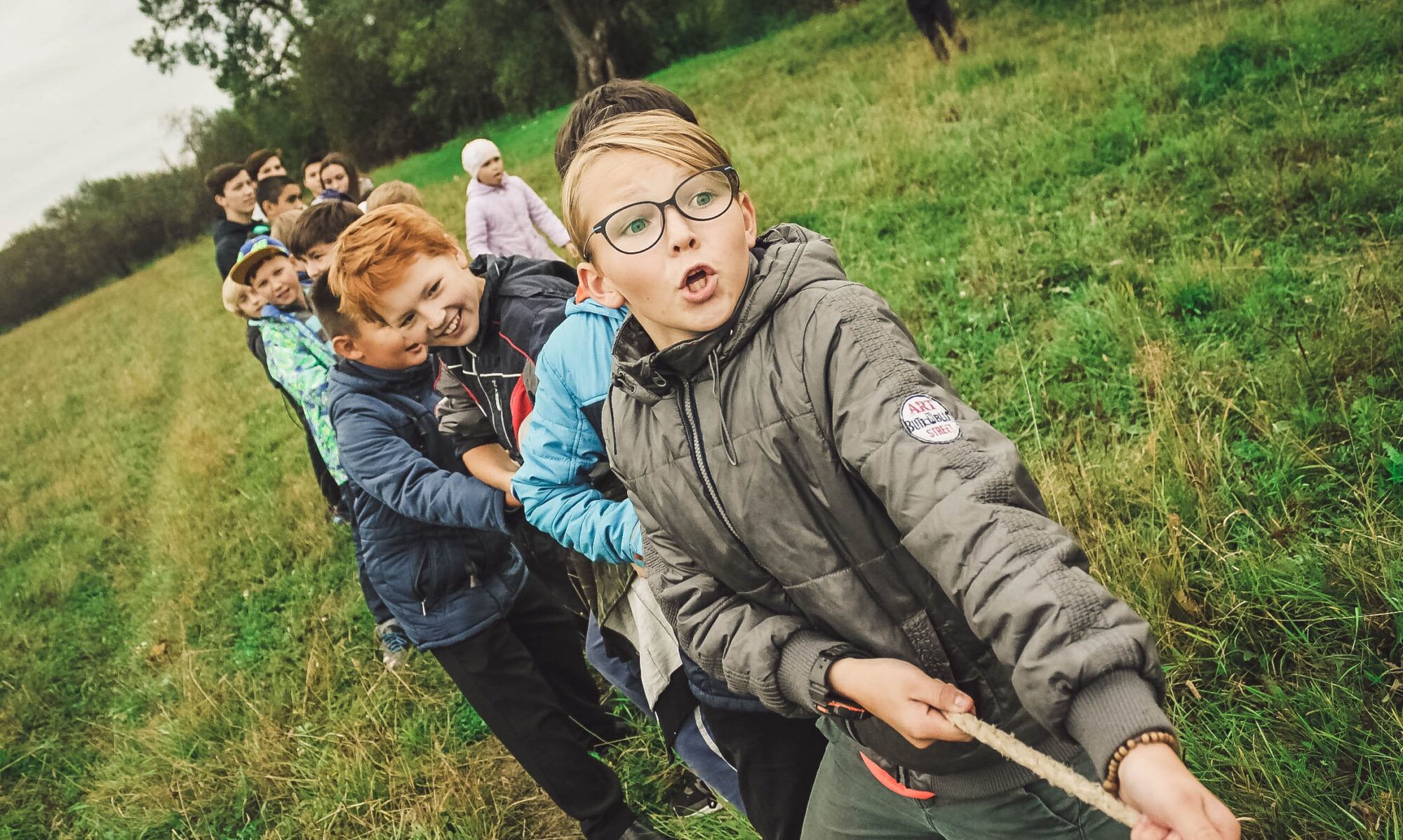

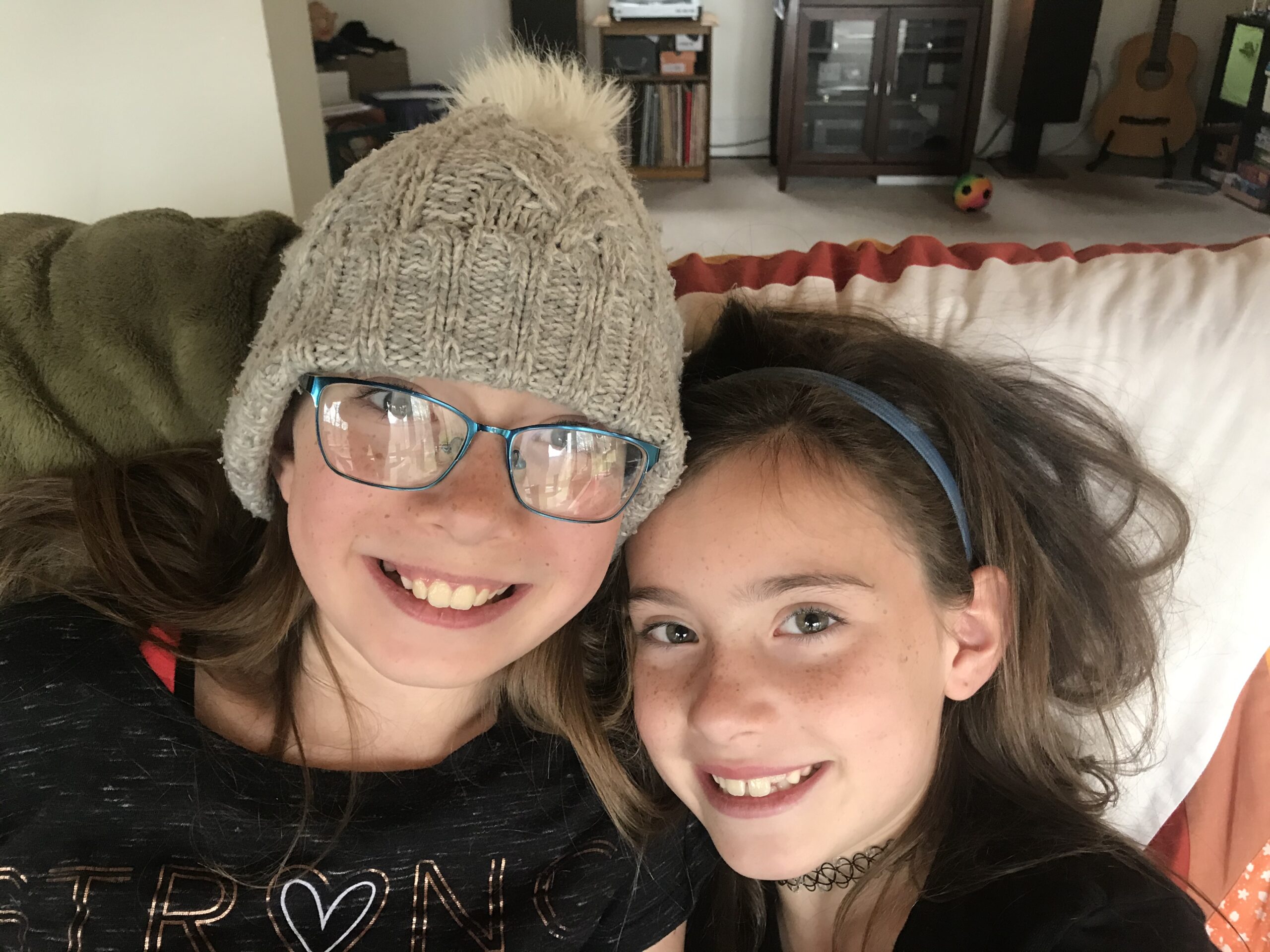
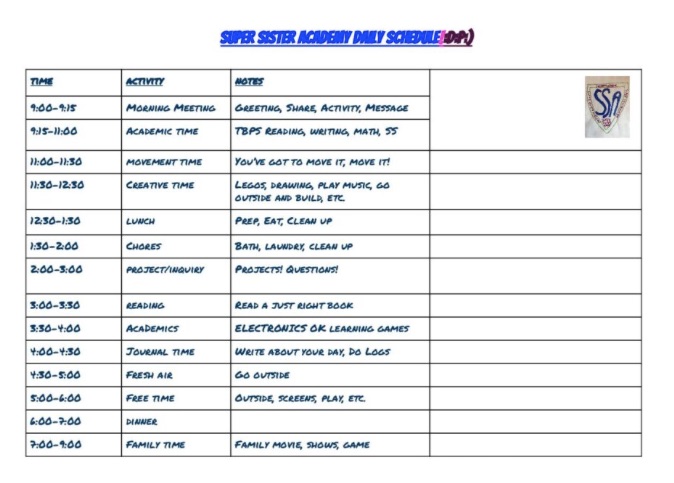
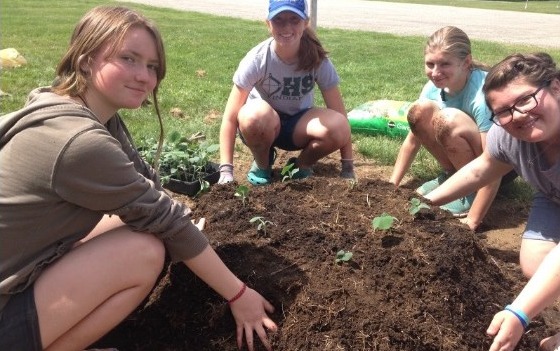
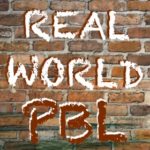
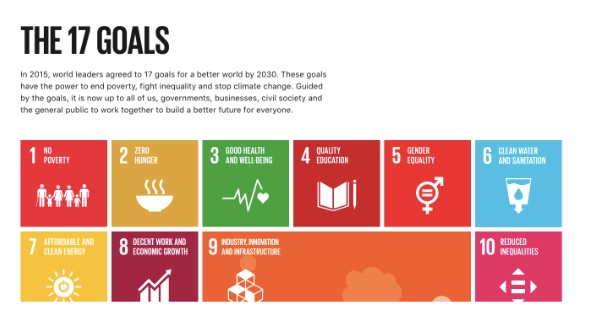
 Educators never feel like they have enough time to do all the things they want to do with students. But for Team Quest at Crossett Brook Middle School in Duxbury, Vermont, the constraints of traditional subject area, schedule and process had become unbearable. So this two-person grade 5-6 team decided to opt for radical transformation.
Educators never feel like they have enough time to do all the things they want to do with students. But for Team Quest at Crossett Brook Middle School in Duxbury, Vermont, the constraints of traditional subject area, schedule and process had become unbearable. So this two-person grade 5-6 team decided to opt for radical transformation.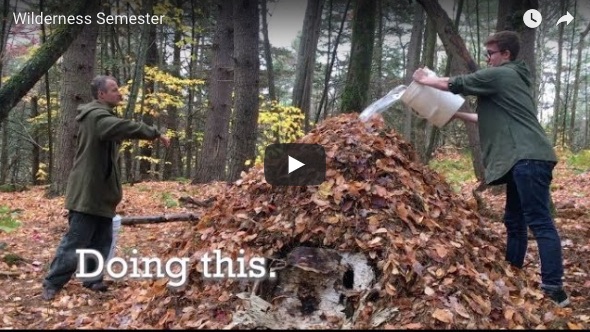
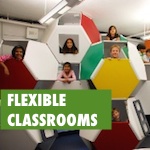
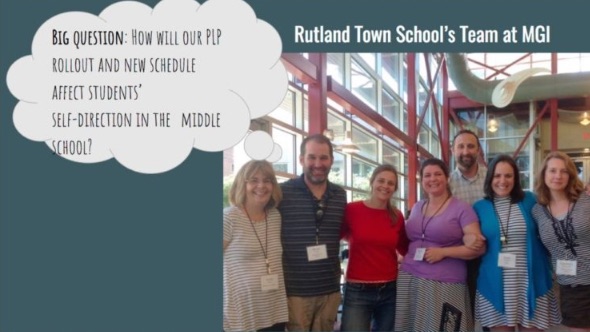
 When it becomes time to talk about scheduling you can often feel the tension rise as everyone’s values and beliefs are put on the table in the attempt to make everyone happy.
When it becomes time to talk about scheduling you can often feel the tension rise as everyone’s values and beliefs are put on the table in the attempt to make everyone happy.